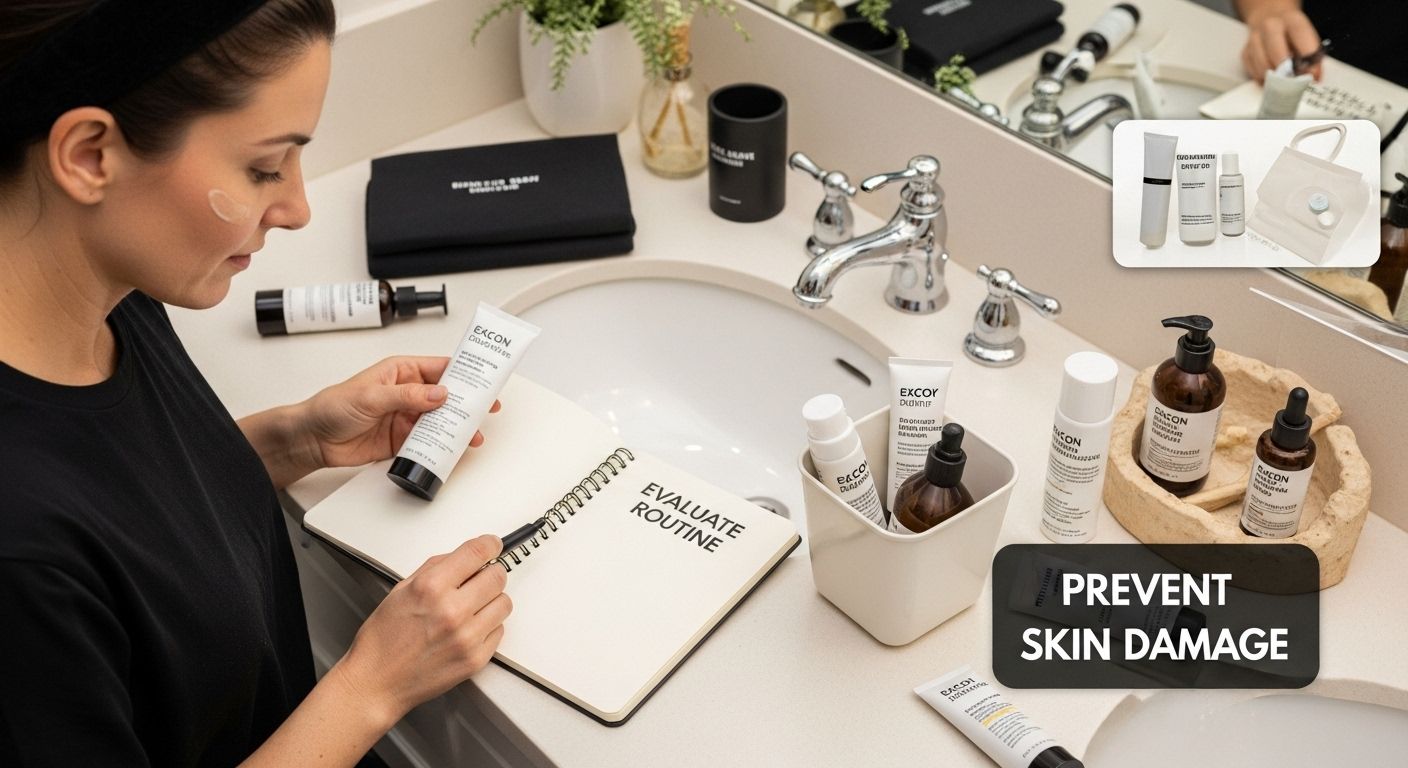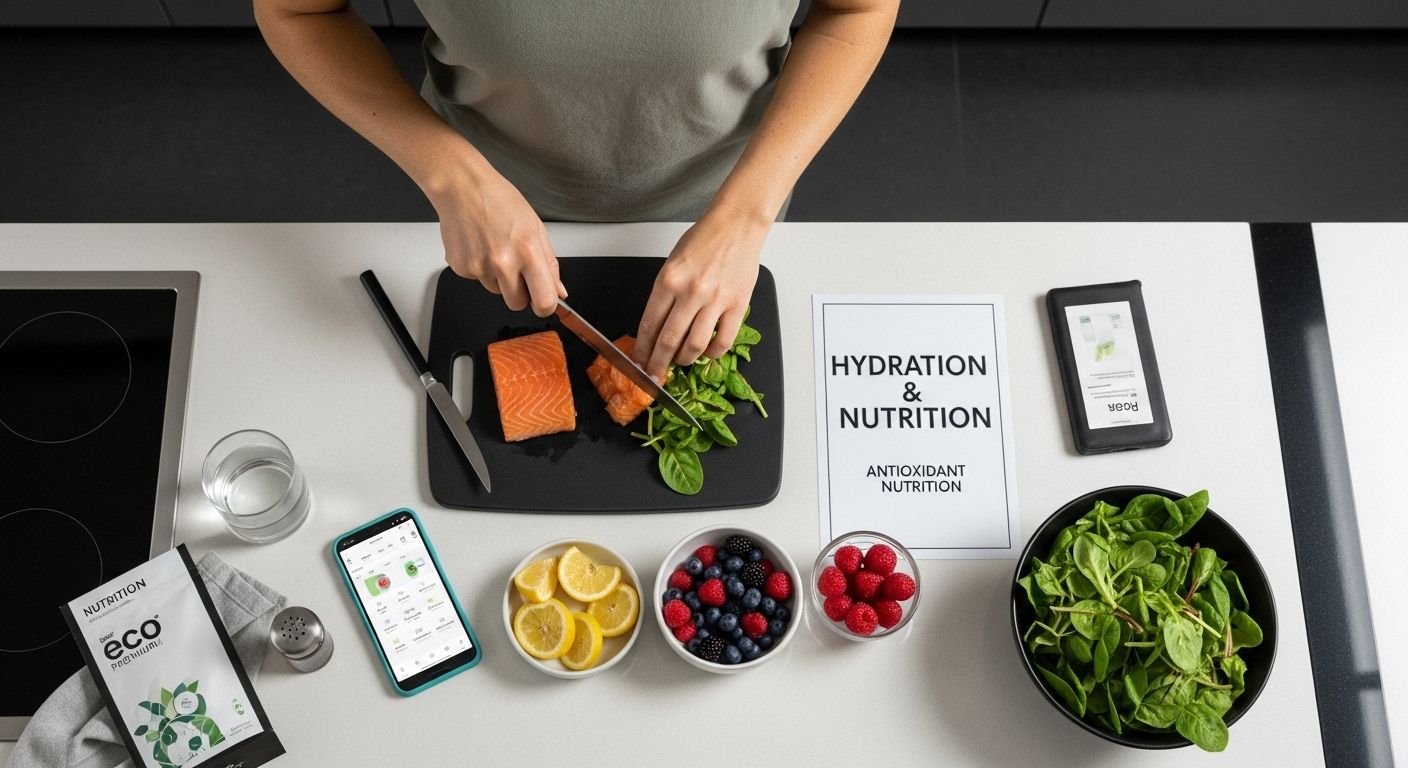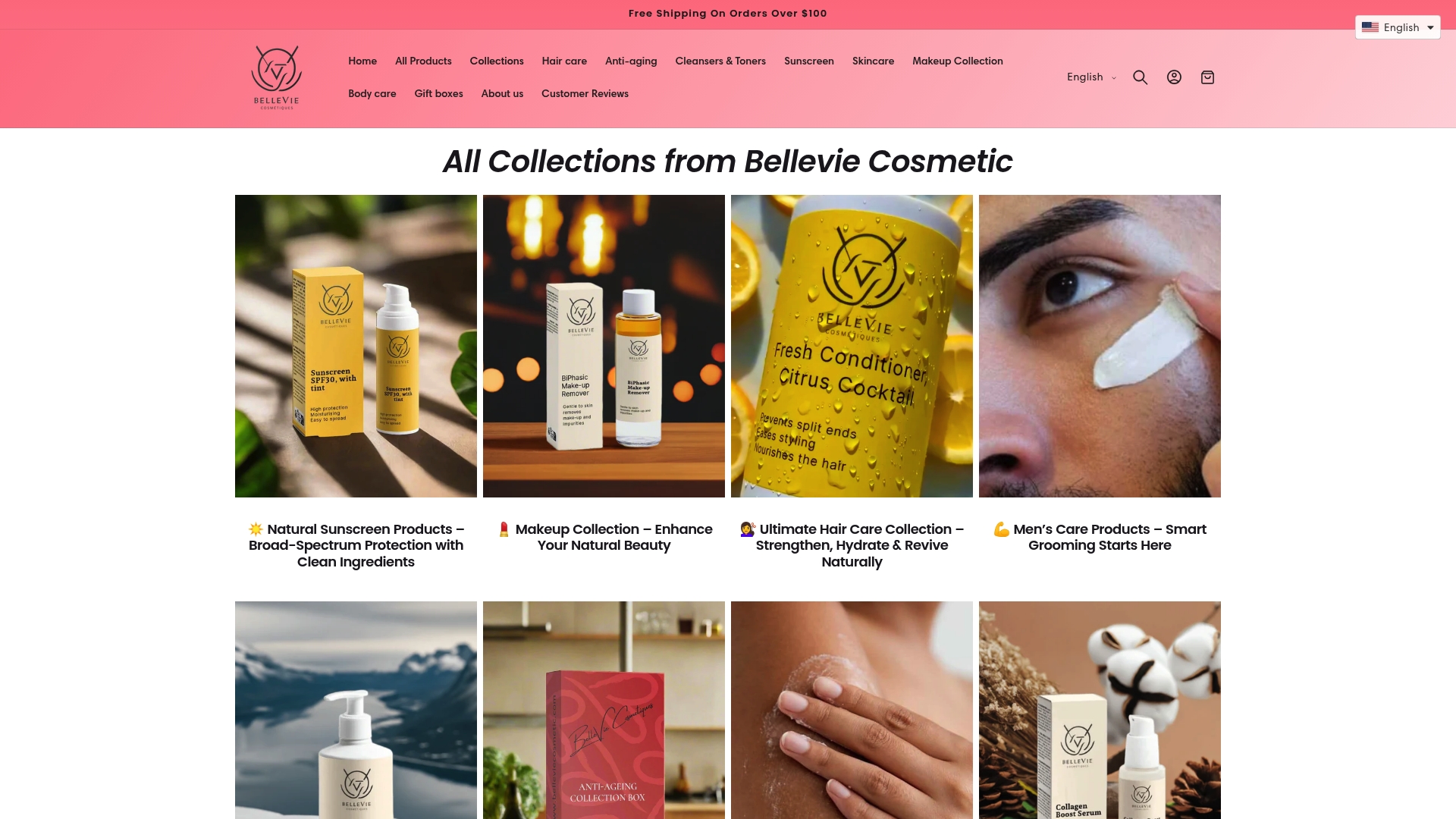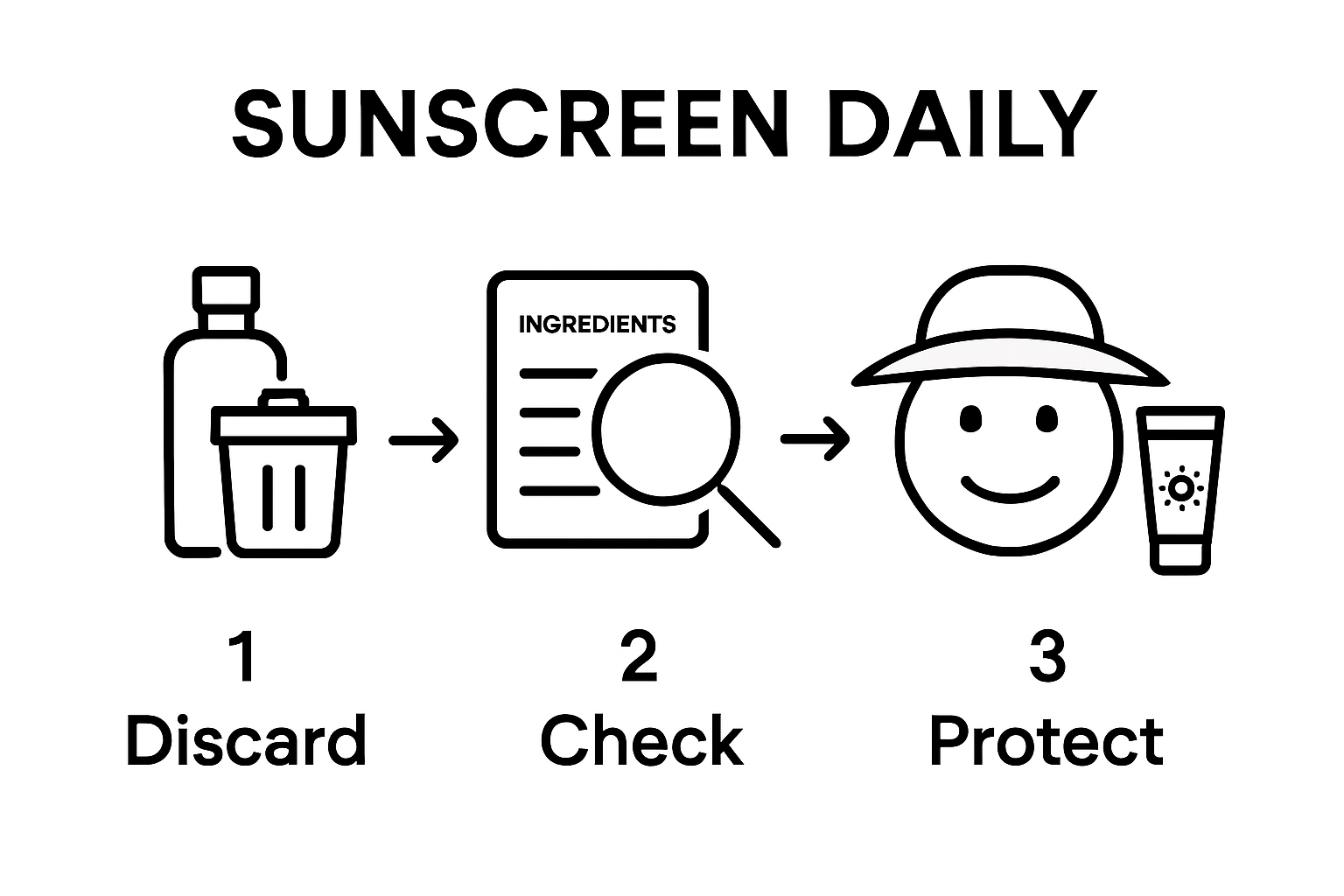Most people think their skincare routine is harmless, just a quick wash and cream. But did you know expired skincare products can introduce bacteria and irritants directly to your skin, quietly doing more harm than you realize? Sticking to the same steps you learned years ago might not be saving your skin at all, in fact, it could be setting you up for long-term damage without you seeing it coming.

Table of Contents
- Step 1: Evaluate Your Skincare Routine
- Step 2: Select High-Quality Skincare Products
- Step 3: Establish A Daily Sunscreen Habit
- Step 4: Incorporate Nourishing Ingredients
- Step 5: Maintain Hydration And Nutrition
- Step 6: Regularly Assess And Adjust Your Strategy
Quick Summary
| Key Point | Explanation |
|---|---|
| 1. Evaluate your skincare routine | Assess daily products and their effectiveness; discard expired items to avoid skin damage. |
| 2. Choose high-quality ingredients | Select products with scientifically proven ingredients tailored to your unique skin type and concerns. |
| 3. Establish a daily sunscreen habit | Apply broad-spectrum sunscreen regularly to protect against UV damage and prevent premature aging. |
| 4. Prioritize hydration and nutrition | Stay hydrated and consume nutrient-rich foods to support skin health from the inside out. |
| 5. Regularly adjust your skincare strategy | Monitor your skin’s response, making changes as needed to adapt to your skin’s evolving needs. |
Step 1: Evaluate Your Skincare Routine
Preventing skin damage starts with a comprehensive understanding of your current skincare routine. Most people unknowingly practice habits that gradually compromise their skin’s health and resilience. Your first strategic move involves a critical, honest assessment of your existing skincare approach.
Begin by examining your daily skincare products and their ingredients. Not all skincare solutions are created equal, and what worked years ago might now be causing subtle but progressive damage. Penn Medicine recommends a basic routine that includes gentle cleansing, consistent moisturizing, and daily sun protection.
Carefully review each product’s age, expiration date, and current condition. Skincare products degrade over time, losing potency and potentially harboring harmful bacteria. Check for signs of separation, changes in color or texture, or unusual odors. These are clear indicators that a product should be discarded immediately. Expired products can introduce bacteria and irritants directly into your skincare routine, potentially causing more harm than good.
Analyze your current cleansing technique. Over-washing can strip your skin’s natural protective barrier, making it vulnerable to environmental stressors. According to St. Luke’s Health, washing your face no more than twice daily helps maintain its natural balance. Pay attention to water temperature, using lukewarm water instead of hot, which can further damage your skin’s protective layer.
Consider creating a simple tracking system to monitor how your skin responds to current products. Note any recurring issues like redness, dryness, breakouts, or sensitivity. These symptoms often signal that your current routine needs refinement. A detailed journal can help you identify patterns and make informed adjustments to your skincare strategy.
Remember, evaluating your skincare routine is not about perfection but progression. Small, intentional changes can significantly impact your skin’s long-term health and appearance.
Step 2: Select High-Quality Skincare Products
Choosing the right skincare products is a critical step in preventing long-term skin damage. Your skin is a complex ecosystem that requires thoughtful, targeted care with scientifically backed ingredients and formulations designed to protect and nourish.
Ingredient intelligence is your most powerful defense against potential skin damage. Scientific research highlights specific ingredients that dermatologists consistently recommend for addressing various skin concerns. Look for products containing powerful active ingredients like retinoids for reducing fine lines and improving skin texture, niacinamide for addressing redness and dark spots, and vitamin C for overall skin brightness and protection.
When selecting skincare products, prioritize formulations that address your specific skin type and concerns. Pay close attention to ingredient lists and avoid products with potentially harmful or irritating components. Watch for red flags like excessive fragrances, alcohol-based solutions, and known allergens that could compromise your skin’s natural protective barrier. Some individuals might experience sensitivity or allergic reactions, so patch testing new products is always recommended.
Consider the holistic approach to skincare protection. Your routine should encompass multiple layers of defense, including daily cleansing, targeted treatments, robust moisturization, and comprehensive sun protection. Seek out products that offer multi-functional benefits - for instance, moisturizers with built-in SPF or serums containing antioxidants that combat environmental stressors.
Understand that high-quality doesn’t always mean the most expensive product. Research ingredients, read clinical studies, and look for transparent brands that provide clear information about their formulations. Some affordable products can be just as effective as luxury alternatives. The key is finding scientifically validated ingredients that work harmoniously with your skin’s unique needs.
Finally, remember that consistency is more important than complexity. A simple, well-chosen routine with high-quality products will always outperform an elaborate regimen with poorly selected items. Listen to your skin, observe how it responds to new products, and be prepared to make adjustments as your skin’s needs evolve over time.
Step 3: Establish a Daily Sunscreen Habit
Sunscreen is your most powerful weapon in preventing long-term skin damage, acting as a critical shield against harmful ultraviolet radiation that accelerates aging and increases skin cancer risk. Establishing a daily sunscreen habit is not optional - it’s essential for preserving your skin’s health and appearance.
Choosing the right sunscreen requires more than grabbing the first bottle you see. Look for broad-spectrum protection that guards against both UVA and UVB rays, with a minimum SPF of 30. Mineral-based sunscreens containing zinc oxide or titanium dioxide offer superior protection and are typically gentler on sensitive skin. Consider your daily activities and lifestyle when selecting a formula - if you spend significant time outdoors or engage in physical activities, opt for water-resistant options that maintain protection during sweating or swimming.
Application technique matters as much as the sunscreen itself. Most people apply far less sunscreen than recommended, dramatically reducing its protective capabilities. The general rule is to use approximately one ounce (a shot glass full) to cover your entire body, with a nickel-sized amount specifically for your face. Apply sunscreen 15-30 minutes before sun exposure, allowing it to fully absorb and create an effective protective barrier. Reapplication is crucial - aim to refresh your sunscreen every two hours, or immediately after swimming, sweating, or towel drying.
Integrate sunscreen into your morning routine to ensure consistent protection. Place your sunscreen next to your toothbrush or morning skincare products as a visual reminder. For facial application, consider using moisturizers or makeup foundations with built-in SPF as an additional layer of defense. However, these should not replace dedicated sunscreen but rather complement it.
Remember that sun protection extends beyond topical applications. Complement your sunscreen routine with protective clothing, wide-brimmed hats, and seeking shade during peak sunlight hours (typically 10 am to 4 pm). Your skin’s health is a comprehensive strategy, and sunscreen is a critical component of that approach.
Verify your sunscreen habit’s effectiveness by checking for consistent coverage, no sunburns, and maintaining even skin tone. Track your progress and be patient - protecting your skin is a long-term investment in your health and appearance.
Step 4: Incorporate Nourishing Ingredients
Transforming your skin’s health requires more than surface-level protection - it demands strategic nourishment from within and through carefully selected topical ingredients. Nourishing ingredients are the building blocks of resilient, radiant skin, acting as a powerful defense against environmental damage and premature aging.
North Dakota State University Extension highlights the critical role of antioxidants in protecting skin from environmental stressors. Seek out skincare products and dietary sources rich in these protective compounds. Look for ingredients like vitamin C, which brightens and protects, hyaluronic acid for deep hydration, and peptides that support collagen production. These powerhouse ingredients work synergistically to repair and shield your skin from daily damage.
Topical application is just one part of the nourishment strategy. Your diet plays an equally crucial role in skin health. Incorporate foods high in omega-3 fatty acids, such as salmon and chia seeds, which help maintain skin’s lipid barrier. Antioxidant-rich fruits and vegetables like berries, spinach, and sweet potatoes provide essential nutrients that combat free radical damage. Staying hydrated by drinking adequate water supports your skin’s natural healing and regeneration processes.
When selecting skincare products, prioritize ingredients that offer multi-dimensional benefits. Ceramides help restore and maintain the skin’s protective barrier, while niacinamide reduces inflammation and helps even skin tone. Amino acids like proline can significantly boost collagen synthesis, helping to maintain skin structure and resilience. Look for serums and moisturizers that combine multiple nourishing ingredients for comprehensive protection.
Pay attention to how your skin responds to new ingredients. Some people may experience initial sensitivity or mild reactions as their skin adjusts. Start with patch testing and introduce new products gradually, allowing your skin time to acclimate. Keep a skincare journal to track changes, noting improvements in texture, hydration, and overall appearance.
Here is a table comparing some of the most recommended nourishing ingredients mentioned in the article, including their primary functions and benefits for skin health:
| Ingredient | Main Function | Key Benefits |
|---|---|---|
| Vitamin C | Antioxidant, brightening | Protects, brightens, helps reduce signs of aging |
| Niacinamide | Soothing, anti-inflammatory | Reduces redness, evens tone, supports barrier |
| Hyaluronic Acid | Deep hydration | Boosts moisture, plumps skin |
| Ceramides | Barrier reinforcement | Restores barrier, locks in moisture |
| Omega-3 Fatty Acids | Lipid barrier support | Reduces inflammation, protects skin |
| Peptides | Collagen support | Firms skin, smooths fine lines |
| Antioxidant-rich Foods | Free radical protection | Combats damage, supports skin renewal |
Remember that nourishing your skin is a holistic journey. Consistency is key - regular application and a balanced approach will yield the most significant long-term results. Your skin reflects both your internal health and external care, so approach nourishment as a comprehensive lifestyle strategy.
Step 5: Maintain Hydration and Nutrition
Hydration and nutrition represent the fundamental pillars of skin health, serving as internal mechanisms that protect and rejuvenate your body’s largest organ. Your skin’s appearance is a direct reflection of your internal wellness, making comprehensive hydration and nutrition strategies essential for preventing long-term damage.
Researchers have demonstrated that consistent water intake significantly impacts skin physiology. Aim to consume approximately two liters of water daily, spreading your intake throughout the day rather than consuming large quantities at once. This approach helps maintain consistent cellular hydration and supports your body’s natural detoxification processes. Consider using a marked water bottle or smartphone app to track your daily water consumption and ensure you’re meeting your hydration goals.
Nutrition plays an equally critical role in skin health. Focus on consuming a diverse diet rich in skin-supporting nutrients. Incorporate foods high in omega-3 fatty acids like salmon and chia seeds, which help maintain skin’s lipid barrier. Antioxidant-rich fruits and vegetables such as berries, spinach, and sweet potatoes provide essential compounds that combat free radical damage. Lean proteins support collagen production, while nuts and seeds offer vital minerals that contribute to skin resilience.
Supplementation can complement your dietary approach, particularly if you struggle to obtain comprehensive nutrition through food alone. Consider targeted supplements like collagen peptides, which support skin elasticity, or hyaluronic acid, which enhances moisture retention. Vitamin D, zinc, and vitamin C are additional supplements that can significantly contribute to skin health when taken consistently and in appropriate dosages.
Beyond dietary strategies, pay attention to lifestyle factors that impact hydration. Reduce alcohol and caffeine consumption, which can contribute to dehydration. Establish a consistent sleep schedule, as quality rest allows your body to repair and regenerate skin cells. Environmental factors like humidity levels and air conditioning can also impact skin hydration, so consider using a humidifier in dry environments to maintain optimal moisture levels.
Track your progress by monitoring skin texture, elasticity, and overall appearance. Well-hydrated skin appears plump, smooth, and luminous. Remember that consistent, mindful nutrition and hydration are long-term investments in your skin’s health and resilience.

Step 6: Regularly Assess and Adjust Your Strategy
Skin health is not a static destination but a dynamic journey requiring continuous monitoring and strategic adaptation. Your skincare approach must evolve as your skin changes with age, environment, and lifestyle factors. Developing a systematic method for regular assessment ensures you’re always providing your skin with precisely what it needs.
Comprehensive skin assessments require a methodical and honest approach. Create a monthly skin journal documenting key observations about your skin’s condition, texture, hydration levels, and any emerging concerns. Photograph your skin in consistent lighting and from the same angles to track subtle changes. Pay close attention to variations in skin color, moisture levels, texture, and the presence of any new or changing skin features.
Technological tools can enhance your assessment strategy. Consider using smartphone apps or digital skin analysis tools that provide detailed insights into your skin’s condition. These technologies can help track changes in skin hydration, detect early signs of sun damage, and provide objective measurements that complement your visual observations. Some advanced apps even offer personalized recommendations based on your skin’s evolving needs.
Establish clear triggers for adjusting your skincare strategy. Seasonal changes, stress levels, hormonal fluctuations, and dietary shifts can all significantly impact skin health. During your monthly assessment, ask yourself critical questions: Are your current products still delivering desired results? Have you noticed increased sensitivity, dryness, or uneven texture? Are there new environmental factors affecting your skin?
Be prepared to make strategic pivots in your skincare routine. This might mean switching to a more hydrating moisturizer during winter months, incorporating additional antioxidant protection during high-stress periods, or adjusting your routine to address hormonal changes. Flexibility is key - what worked six months ago might not be optimal for your current skin condition.
Consult professionals when needed. While self-assessment is powerful, dermatologists and skincare professionals can provide expert insights that complement your observations. Consider scheduling an annual or biannual professional skin consultation to gain deeper understanding of your skin’s unique characteristics and potential emerging concerns.
Remember that skin health is a continuous learning process. Your commitment to regular assessment and willingness to adapt are your most valuable tools in maintaining long-term skin resilience and vitality.
Discover Real Protection for Your Skin with BelleVie
Are you feeling overwhelmed by the endless cycle of testing skincare products that promise to prevent skin damage, yet never deliver true results? This article outlined how real skincare success means using high-quality, thoughtful ingredients and making changes that match your unique needs. At BelleVie, our pure and clinically backed formulas help you break the cycle of irritation, wasted money, and incomplete protection. We offer everything you need for your full routine—from gentle cleansers that preserve your skin barrier, to our award-winning mineral sunscreen stick for daily UV protection, to powerful serums that target damage at the source. Each product is created with your skin’s health and long-term glow in mind.

Ready to simplify your routine and see real change? Take the first step by exploring our complete clean beauty collection and discover solutions that respect both your skin and your values. Shop now at BelleVieCosmetic.com and claim your free skincare gift when you subscribe and qualify. Healthy, resilient skin starts with the right choices—start your revitalizing routine today.
Frequently Asked Questions
How can I evaluate my current skincare routine?
Begin by examining your daily skincare products and their ingredients. Check for age, expiration dates, and any signs of product degradation. Keep a skincare journal to track how your skin responds to each product, noting any issues like redness or dryness.
What ingredients should I look for in skincare products to prevent skin damage?
Focus on scientifically backed ingredients like retinoids for fine lines, niacinamide for redness, and vitamin C for brightness. Prioritize formulations that cater to your specific skin type and concerns, avoiding harmful components like excessive fragrances and alcohol.
Why is sunscreen essential for skin protection, and how should I apply it?
Sunscreen is crucial for protecting against harmful UV radiation, which accelerates aging and increases skin cancer risk. Use a broad-spectrum sunscreen with at least SPF 30. Apply a generous amount 15-30 minutes before sun exposure and reapply every two hours, or immediately after swimming or sweating.
How can nutrition affect my skin’s health?
Nutrition plays a vital role in skin health. Incorporate foods rich in omega-3 fatty acids, antioxidants, and vitamins to support your skin. Staying hydrated and consuming a balanced diet enhances your skin’s resilience and appearance while helping guard against environmental damage.
Recommended
- Top 5 Proven Skincare Ingredients Backed by Science (And Products That Actually Work) – BelleVie Cosmétiques
- Top 5 Gesichtsöle für strahlende Haut 2025 | BelleVie Naturkosmetik – BelleVie Cosmétiques
- Top 5 Proven Skincare Ingredients Backed by Science (And Products That Actually Work) – BelleVie Cosmétiques
- Top 5 Proven Skincare Ingredients Backed by Science (And Products That Actually Work) – BelleVie Cosmétiques

